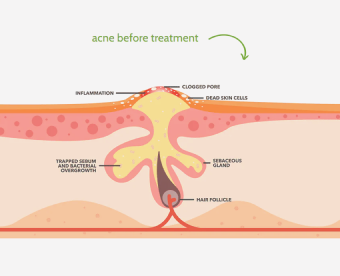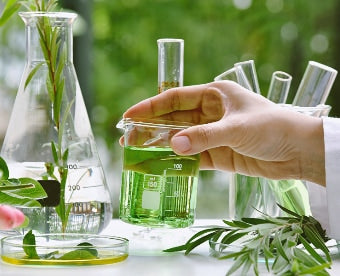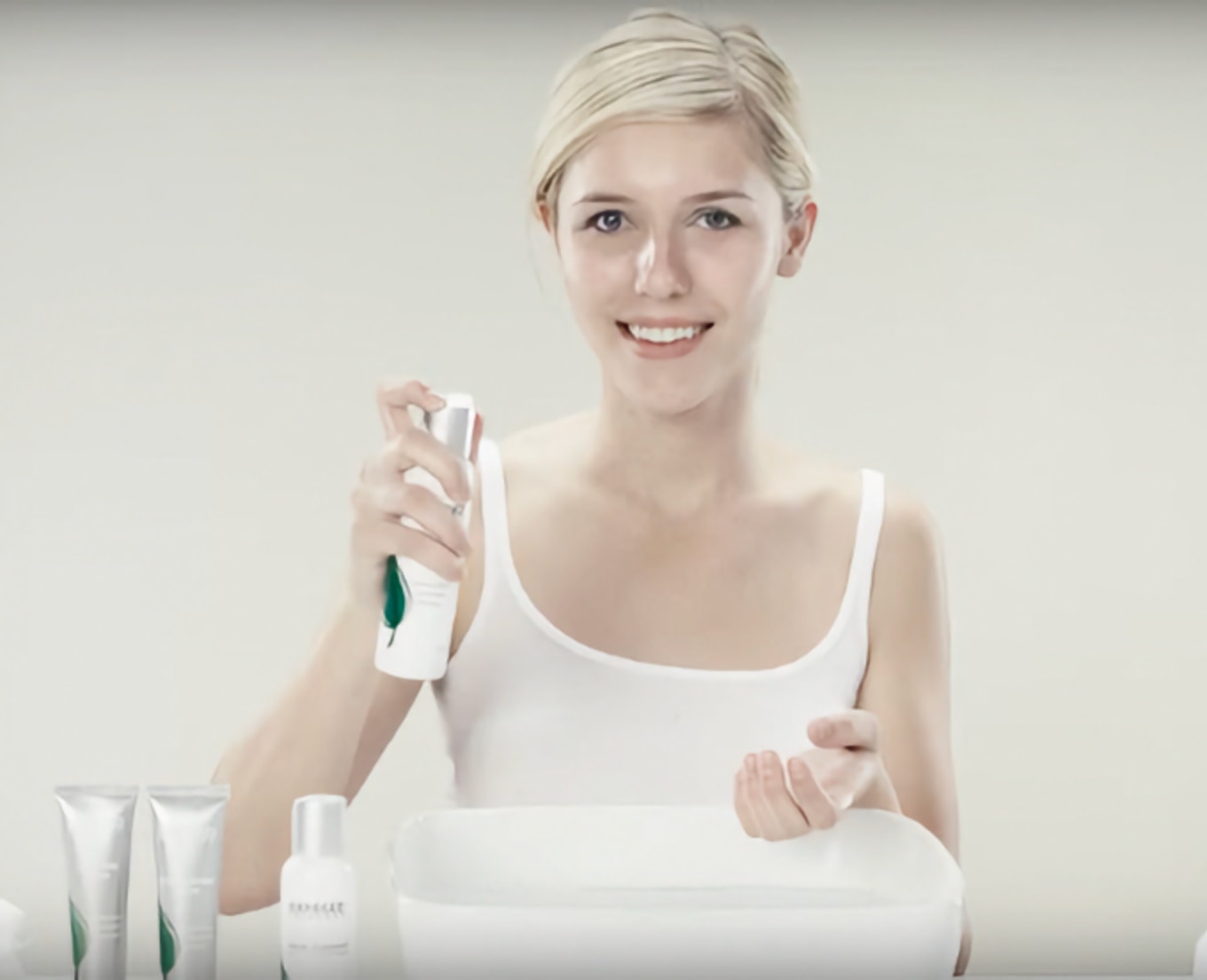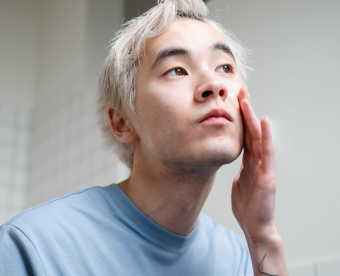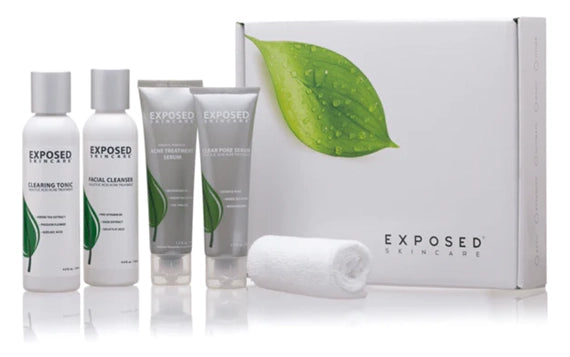One of the hurdles that often accompany the arduous journey of cancer treatment is the onset of skin-related side effects, notably "chemo acne." Though the primary concern for cancer patients is treating cancer itself, the side effects can cause significant discomfort and self-consciousness.
This article dives deep into what chemo acne is, why it occurs, and how it can be managed. It also aims to provide a comprehensive understanding of how this condition differs from common acne and various treatments that can alleviate its symptoms.
Also read: How to choose the best acne treatment
Biggest Take-Aways:
- Chemo acne is a complex condition arising from certain chemotherapy drugs' side effects.
- Special attention to skin care is crucial in managing chemo acne, including gentle cleansers and moisturizers.
- Exposure to the sun can make the skin more sensitive, exacerbating the symptoms of chemo acne.
- Exposed Skin Care offers specialized products that can significantly help manage chemo acne effectively.

What is Chemo Acne?
Introduction to Chemo Acne
Chemo acne is a common skin-related side effect in patients undergoing chemotherapy or targeted therapy for cancer. This condition presents as a rash that may look like acne, complete with redness, pimple-like blemishes, and sometimes even pus-filled sores. It can make the skin feel irritable and itchy, adding another layer of distress to cancer treatment.
Differences Between Chemo Acne and Common Acne
Although chemo acne appears on the skin much like conventional acne, the root causes are substantially different:
- Cause of Origin: Chemo acne is a side effect of cancer treatment, specifically chemotherapy drugs and targeted therapy. In contrast, common acne often results from clogged pores, bacteria, or hormone imbalances.
- Affected Areas: While common acne usually appears on the face, neck, and back, chemo acne can manifest anywhere on the body, including the scalp and chest.
- Symptoms: Besides the acne-like appearance, chemo acne often comes with itchy skin and may also cause skin redness and dryness.
Causes of Chemo Acne
Chemotherapy Drugs and Skin Reactions
Chemotherapy involves using drugs to kill cancer cells, but these medications also can potentially affect the skin adversely. Skin toxicity, including chemo acne, is a common side effect of certain chemotherapy medications. The outer layers of the skin may respond by forming a rash or blemishes.

Targeted Therapy and EGFR Rash
Targeted therapy, unlike chemotherapy, targets specific cancer cells. However, these treatments can also disrupt the epidermal growth factor receptor (EGFR), leading to EGFR rash that closely resembles chemo acne.
Radiation Treatment and Skin Sensitivity
Radiation treatment or radiation therapy is often used alongside chemotherapy. While radiation dermatitis and radiation recall are more common, radiation can make skin more sensitive, thus aggravating chemo acne or chemo rash symptoms.
Immunotherapy and Skin Changes
Immunotherapy, which boosts the body's natural defenses to fight cancer, can also lead to skin changes, including chemo acne and itchy skin.
How is Chemo Acne Diagnosed?
Observing Patterns and Timing
Chemo acne usually appears within 90 days of treatment starting. Doctors may track when the symptoms started and how they correspond with the treatment plan.
Skin Biopsy
A skin biopsy involves examining a small skin sample under a microscope. This helps confirm whether the acne-like symptoms are indeed chemo acne or a different skin condition.

Treatment Options for Managing Chemo Acne
Given that the main objective is to treat cancer effectively, the secondary aim is to manage the symptoms of chemo acne without compromising the cancer treatment. Here are some ways to treat the symptoms:
Cleansers and Moisturizers
A gentle cleanser can help remove dead skin cells, dirt, and oils from the skin, making it easier to apply other treatments. Follow this up with a non-comedogenic moisturizer to hydrate and soothe the skin.
Topical Treatments
Topical creams specifically designed to treat acne and dry skin can be effective. Look for products with ingredients that soothe irritation and redness.
Sunscreen and Sun Protection
Using sunscreen with a high sun protection factor (SPF) is crucial as cancer treatments can make the skin more sensitive to UVA and UVB rays, exacerbating chemo acne symptoms.
Peel and Exfoliation
Peeling treatments can help by removing the outer layers of the skin, promoting new skin formation. However, be cautious as over-exfoliating can irritate sensitive skin further.
Tips for Daily Care
Morning and Night Routine
Implementing a skin-care routine in the morning and at night can go a long way. Use a cleanser, moisturize, and don’t forget to apply sunscreen during the day.

Hands and Feet Care
Chemo acne can also appear on the hands and feet. Regular moisturization can prevent dryness and soothe itchy skin in these areas.
Hydration
While external hydration is important, internal hydration cannot be ignored. Drink plenty of fluids throughout the day to keep the skin hydrated.
Myths and Misconceptions about Chemo Acne
"It's a Sign That Treatment is Working"
One common misconception is that skin rashes or chemo acne indicate the cancer treatment works. There is no scientific evidence to support this claim.
"All Cancer Patients Will Experience It"
While it is a common side effect of cancer treatment, not every patient experiences chemo acne. It may vary depending on the type of cancer, treatment plan, and individual skin types.
"Anti-Acne Products Are Always Helpful"
Not all anti-acne products are suitable for treating chemo acne. In fact, some may contain harsh chemicals like sulfate that can further irritate the skin.
The Benefits of Using Exposed Skin Care for Managing Acne
Managing the side effects of cancer treatment, such as chemo acne and chemotherapy rash, can be daunting. Exposed Skin Care comes as a savior with its range of products specifically designed to address various skin issues.
Here's how Exposed Skin Care can be beneficial for you:
- Targeted Treatment: Exposed Skin Care products work effectively against the symptoms of chemo rash and breakouts caused by cancer treatment.
- Multi-faceted Approach: The range covers your face and body, ensuring a comprehensive skincare regimen.
- Safe Ingredients: Unlike other skin products containing harsh chemicals, Exposed Skin Care products are formulated to moisturize and soothe without causing further irritation.
- Minimizes Side Effects: Patients receiving targeted therapy and stem cell treatments may experience side effects like itching, blisters, and sunburn. Exposed Skin Care offers products like Clearing Tonic and Clear Pore Serum that inhibit these conditions.
- Holistic Care: The line also includes products that address other side effects like hair loss and nail changes.
Your healthcare team may recommend Exposed Skin Care as a part of your rash treatment plan. With regular use, the products can mitigate the risk of further breakouts and irritation, allowing you to focus on your primary cancer treatments.
Conclusion
Navigating the challenges of cancer treatment is already an uphill battle, and the onset of chemo acne adds a layer of complexity. The effects of this skin condition go beyond the visual aspects; they may also lead to itching, dryness, and general discomfort.
While the primary focus of any cancer treatment will be on targeting the cancer cells, it is also important to pay attention to the side effects like chemo acne that these drugs may induce. Keeping the skin moisturized is crucial, especially when dealing with the added sensitivity caused by exposure to the sun during cancer treatment.
Exposed Skin Care offers an effective option for managing regular acne and the more complex rashes and skin conditions that may arise from cancer treatments. Incorporating such specialized skincare products can make a noticeable difference in the patient's quality of life.
As we have seen, the effects of chemo acne can be mitigated to some extent through careful skincare and treatment plans that include gentle cleansers, moisturizers, and even specialized products designed to treat this condition.
Though chemo acne is a common side effect, understanding it better and employing strategies to manage it can ease this aspect of the cancer treatment journey. It's not just about fighting cancer; it's also about maintaining the best quality of life possible throughout this challenging time.
FAQs
What is chemo acne?
Chemo acne is a skin condition that occurs as a side effect of certain chemotherapy drugs used in cancer treatment.
Is chemo acne similar to regular acne?
Though they may look similar, chemo acne is different from regular acne. It's often more challenging to manage and is directly related to chemotherapy treatment.
Can exposure to the sun worsen chemo acne?
Yes, sun exposure can make your skin more sensitive when undergoing cancer treatment, potentially exacerbating chemo acne.
Is moisturizing important for managing chemo acne?
Absolutely. Moisturizing helps soothe the skin and can be crucial to your chemo acne management plan.
What drugs are usually associated with chemo acne?
Chemo acne is often seen with targeted therapy drugs and certain chemotherapy medications.
Can Exposed Skin Care help in treating chemo acne?
Yes, Exposed Skin Care offers a range of products that can effectively manage the symptoms of chemo acne and other skin issues related to cancer treatment.



